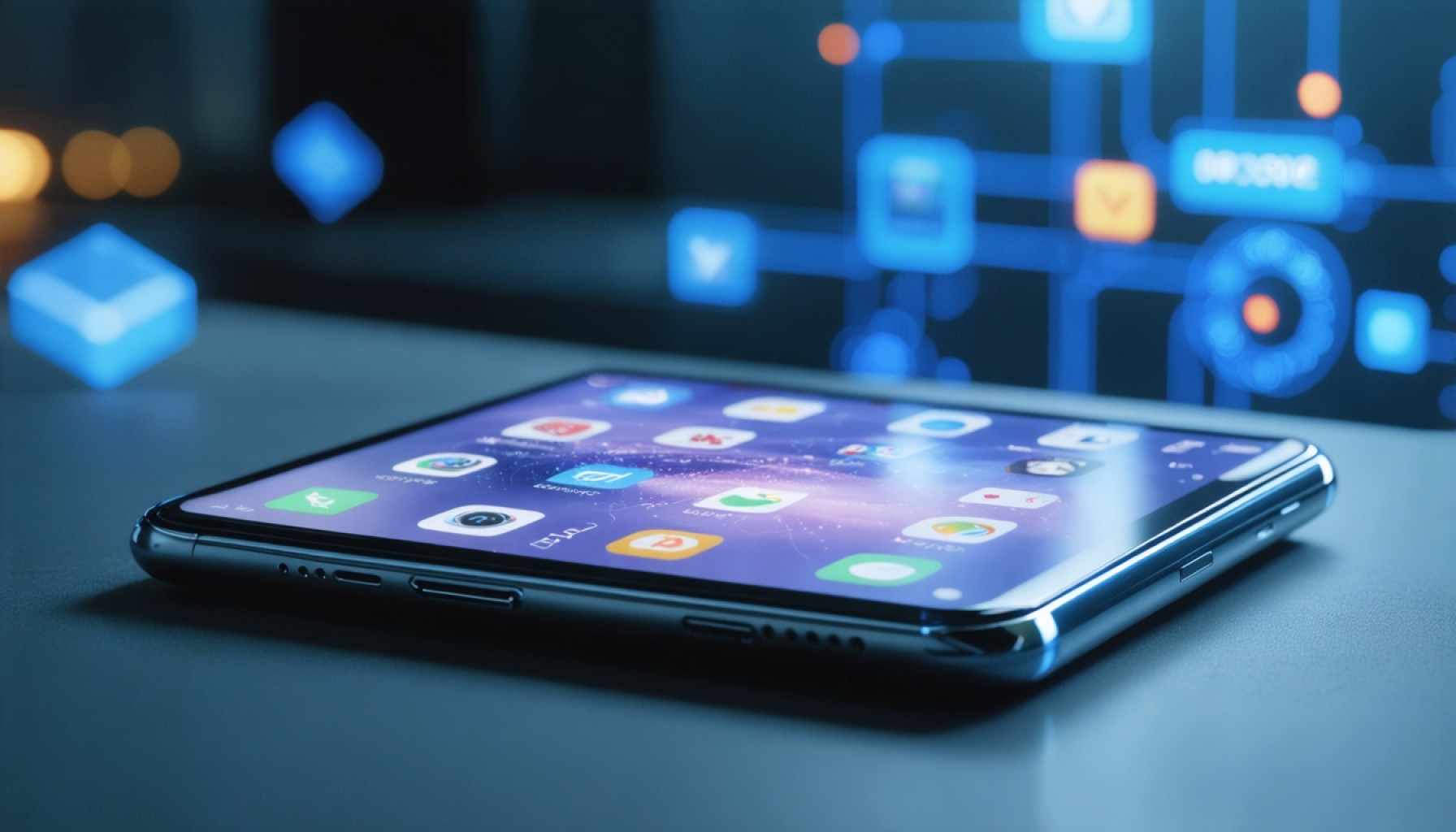
- Google’s Project Astra uses Gemini Live to revolutionize human-tech interaction, turning ordinary Android devices into advanced interpreters of the physical world.
- Gemini Live transforms Android phones into tools that can answer queries about surroundings in real-time, available through a $19.99 monthly subscription.
- This innovation isn’t limited to flagship devices like Pixel or Samsung Galaxy, but extends to many Android models, suggesting a phased rollout.
- Gemini Live enhances phones by making them proactive guides through everyday environments, evolving from static analysis to dynamic interaction.
- Basic features are accessible without purchase, but the full suite of Project Astra’s offerings with visual problem-solving requires the premium subscription.
- The technology encourages users to harness their devices as creative and enlightening companions, opening new avenues for interaction and discovery.
Emerging from the realm of science fiction, Google’s ambitious AI project, known as Project Astra, is setting a new standard for interaction between humans and technology. By wielding the power of Gemini Live, this audacious venture transforms ordinary Android devices into sophisticated interpreters of the physical world. In a new announcement, Google unveiled that this groundbreaking feature will soon weave itself into a broader spectrum of Android phones, transcending its anticipated exclusivity to high-end hardware.
Picture this: as you wander through bustling city streets or explore dense forest paths, the camera on your humble smartphone becomes an active participant in your adventure. With the upcoming integration, your phone meticulously dissects its surroundings, answering queries about objects in view—whether a historic monument demands a story or a rare plant needs identification. This isn’t just an upgrade; it’s an invitation to interact with the tangible world in an unprecedented manner, all via a $19.99 monthly Gemini Advanced subscription.
In a small yet noteworthy departure from the expected, Google has chosen not to reserve this technology solely for its flagship devices like Pixel or Samsung Galaxy. Instead, this innovation is spreading its wings across numerous Android models. However, a cascade release suggests patience may be required before you see it enliven your own screen.
The heart of Gemini Live beats with a naturalistic cadence. As an evolved conversationalist, it adeptly bridges the gap between man and machine. Its ability to access your camera and screen transforms it from a passive voice assistant into a proactive guide through the tapestry of everyday life. Already proficient at analyzing static images, the Dynamic Live upgrades enable it to decode and converse in real time, marking an evolution of how we engage with our environments.
For those more traditional tech enthusiasts, the ladder of features begins with basic Gemini Live capabilities, accessible without the Advanced tier. However, the full symphony of Project Astra’s offerings—solving your in-the-moment dilemmas or unraveling complex visual puzzles—awaits those who hop aboard the premium experience.
As we stand on the brink of this digital frontier, the message is clear: embrace technology as a canvas for creativity and inquiry. The devices in our pockets are no longer mere tools; they are now companions, ready to illuminate the world in ways limited only by imagination.
Google’s Project Astra and Gemini Live: Revolutionizing Real-Time AI Interaction
In the ever-evolving world of artificial intelligence, Google’s Project Astra is a revolutionary step forward, especially with its integration of the Gemini Live feature. This innovation is transforming Android devices, allowing them to become real-time interpreters of our physical environment. Here, we delve deeper into aspects that the original article touched upon, offering an expanded view on trends, features, and what this could mean for users and the tech industry.
Key Features and Specifications
– Gemini Live Capabilities: At the core of Google’s Project Astra is Gemini Live. This tool transforms cameras on Android devices into intelligent interpreters, capable of identifying objects, plants, and even historic landmarks in real time. This feature uses AI to process visual data instantly, offering explanations and insights on demand.
– Subscription Model: Users can access basic Gemini Live features for free, but the full capabilities are unlocked with a $19.99 monthly Gemini Advanced subscription. This tier provides access to premium features such as real-time dynamic analysis and enhanced object recognition.
How-To Steps: Maximizing Gemini Live’s Potential
1. Activate Camera Integration: Make sure your device’s camera permissions are enabled for the Gemini Live application to function seamlessly.
2. Engage in Exploration Mode: Use the camera to scan your surroundings, allowing the AI to offer insights and answer queries about objects or landmarks.
3. Upgrade for Full Features: Consider the Gemini Advanced subscription to unlock full real-time interaction capabilities if you frequently need comprehensive object analysis.
Real-World Use Cases
– Travel and Exploration: Use Gemini Live to discover details about historical sites or unknown plants while traveling, turning your smartphone into a dynamic travel companion.
– Education and Learning: In educational settings, students can use the feature for interactive learning experiences, engaging with subjects like biology or geography in a hands-on manner.
Market Forecasts and Industry Trends
Analysts predict that the AR (augmented reality) and AI-driven mobile app industry will grow significantly by 2030 as more consumers seek interactive and educational tools through their devices. Google’s decision to integrate Gemini Live across a wider range of Android models demonstrates a strategic move to capture a larger portion of this emerging market.
Controversies and Limitations
– Privacy Concerns: With AI systems that utilize camera and screen access, data privacy is a crucial consideration. Users should be aware of what data is being collected and how it’s used.
– Device Compatibility: Although Gemini Live will be available on numerous Android devices, older models may not support advanced functionalities due to hardware limitations.
Security and Sustainability
– Security Protocols: Google has implemented strong security measures to ensure that data handled by Gemini Live remains secure. However, users should regularly update their apps and system software to mitigate vulnerabilities.
– Sustainability Initiatives: The implementation of advanced AI features across a broad range of devices aligns with Google’s commitment towards sustainable technology, reducing the need for frequent hardware upgrades.
Pros & Cons Overview
– Pros:
– Enhances user interaction with environments.
– Accessible on numerous Android devices.
– Offers both free and premium engagement levels.
– Cons:
– Requires an additional subscription for full features.
– Potential privacy concerns regarding data usage.
Conclusion: Actionable Recommendations
For those intrigued by the potential of turning their smartphone into a sophisticated guide, the integration of Gemini Live is a significant opportunity. Start by exploring the free features and consider the premium subscription if you find value in deeper real-time insights and object analysis. Always remain vigilant about app permissions and data sharing.
For further details on Google’s latest innovations, visit Google.
By embracing these technologies, you can enhance not only your digital experiences but also enrich your interaction with the world around you. As we continue to step into the future of AI-driven technology, the possibilities are just beginning to unfold.



